Beaded Lizard Heloderma sp. (formerly Heloderma horridum ssp.)


Beaded Lizards are native only to Mexico and Guatemala.

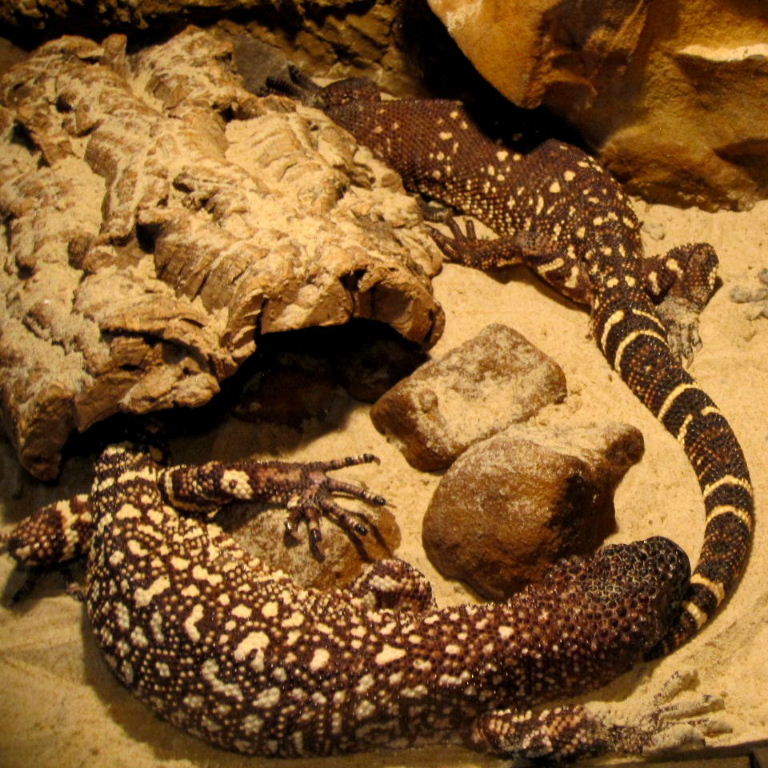

The 4 subspecies of the wonderfully-named Heloderma horridum (horrible studded-skin) were given full
species status in 2013 (not accepted by all). They are the Mexican Beaded from northern Mexico, H. horridum,
the Rio Fuerte Beaded from central Mexico, H. exasperatum (photos on this page are both of these), and the Chiapan Beaded
from southern Mexico, H. alvarezi. All these have contiguous ranges and live in forest habitat. The extremely rare and
critically endangered Guatemalan Beaded, H. charlesborgeti, is separated from these in one dry valley in Guatemala.



3 species of Beaded Lizard look similar with an armour of bony beads protecting their skin and a black base
with off-white or yellow spots/markings and a banded tail telling predators they are toxic. The Chiapan is usually plain black, grey or brown.
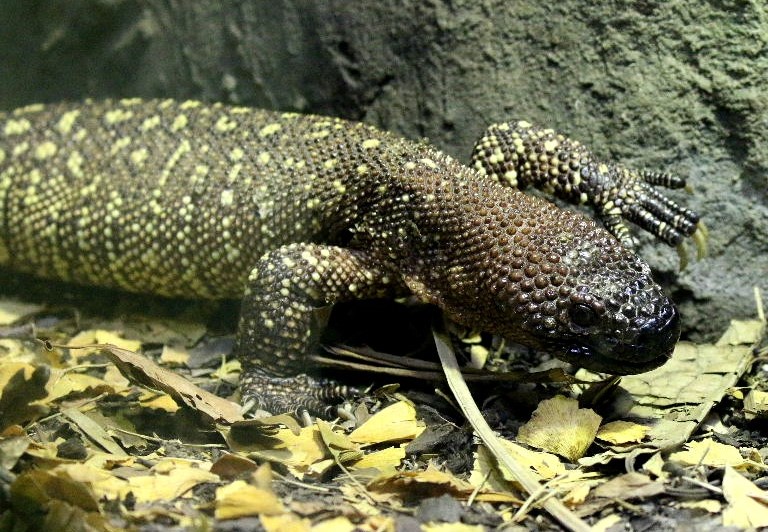
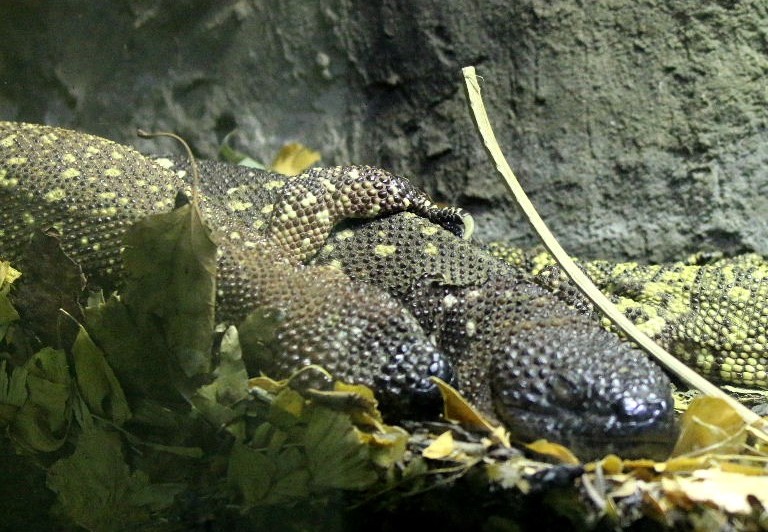
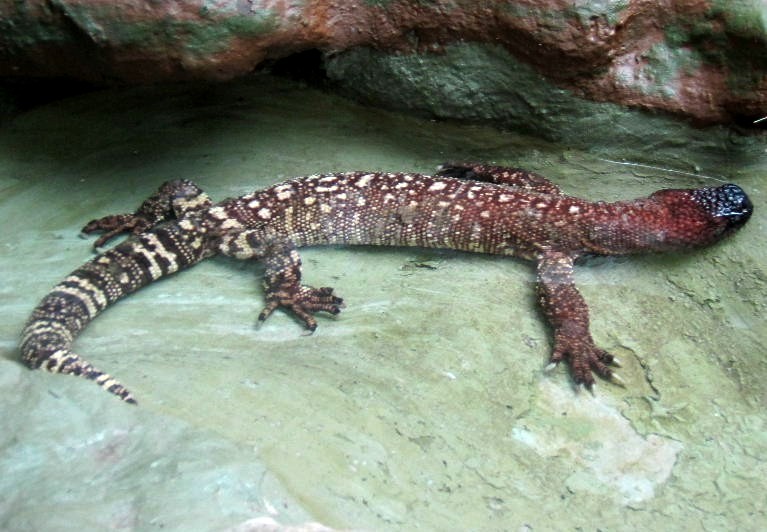
The Beaded Lizards are among the few confirmed venomous lizards in the world, the others being its close relative the Gila Monster
and also Indonesia's Komodo Dragon.
They can grow to some 3 feet (1 metre) long, (larger than the Gila Monster).
Since their diet is almost entirely eggs of reptiles and birds, the venom is probably for defence (and used by humans in medical research).


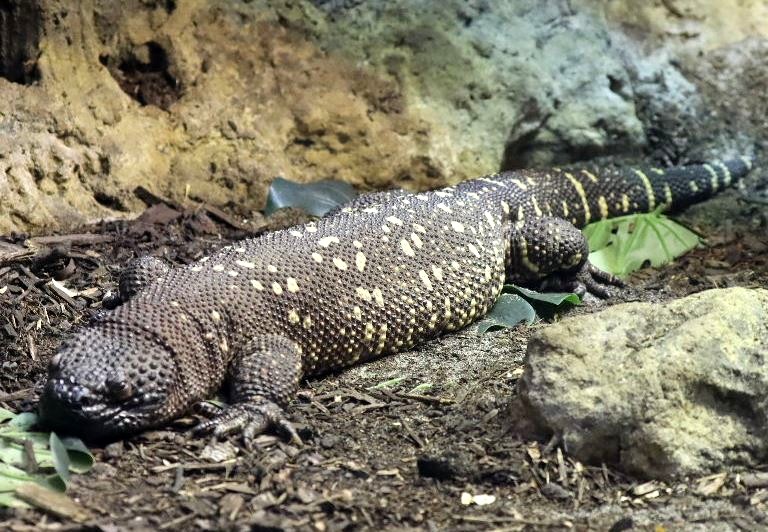
Beaded Lizards have forked tongues to taste their environment like Monitor Lizards and snakes. Unlike most lizards, their
tails do not break off and regenerate, since the tails are used to store fat for the winter. The semi arboreal lizard
spends most of the day and night in underground burrows.


